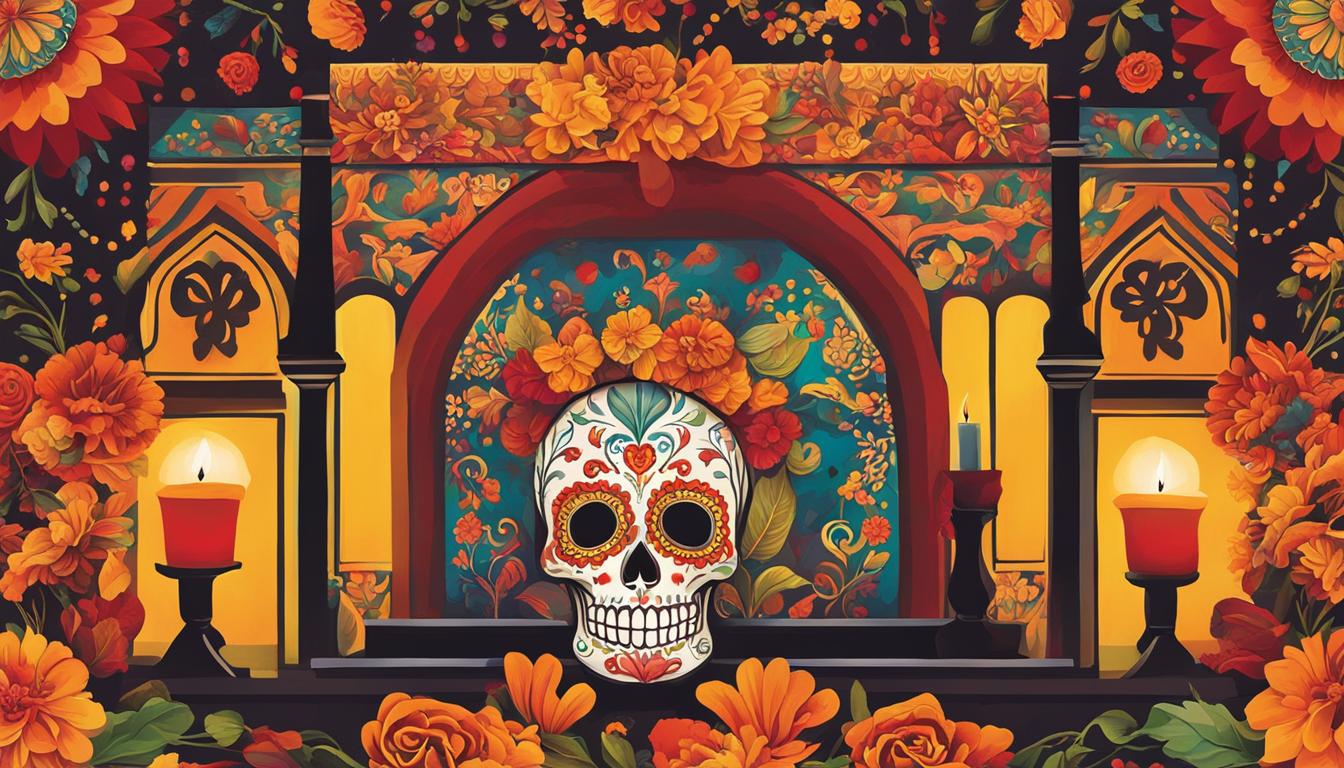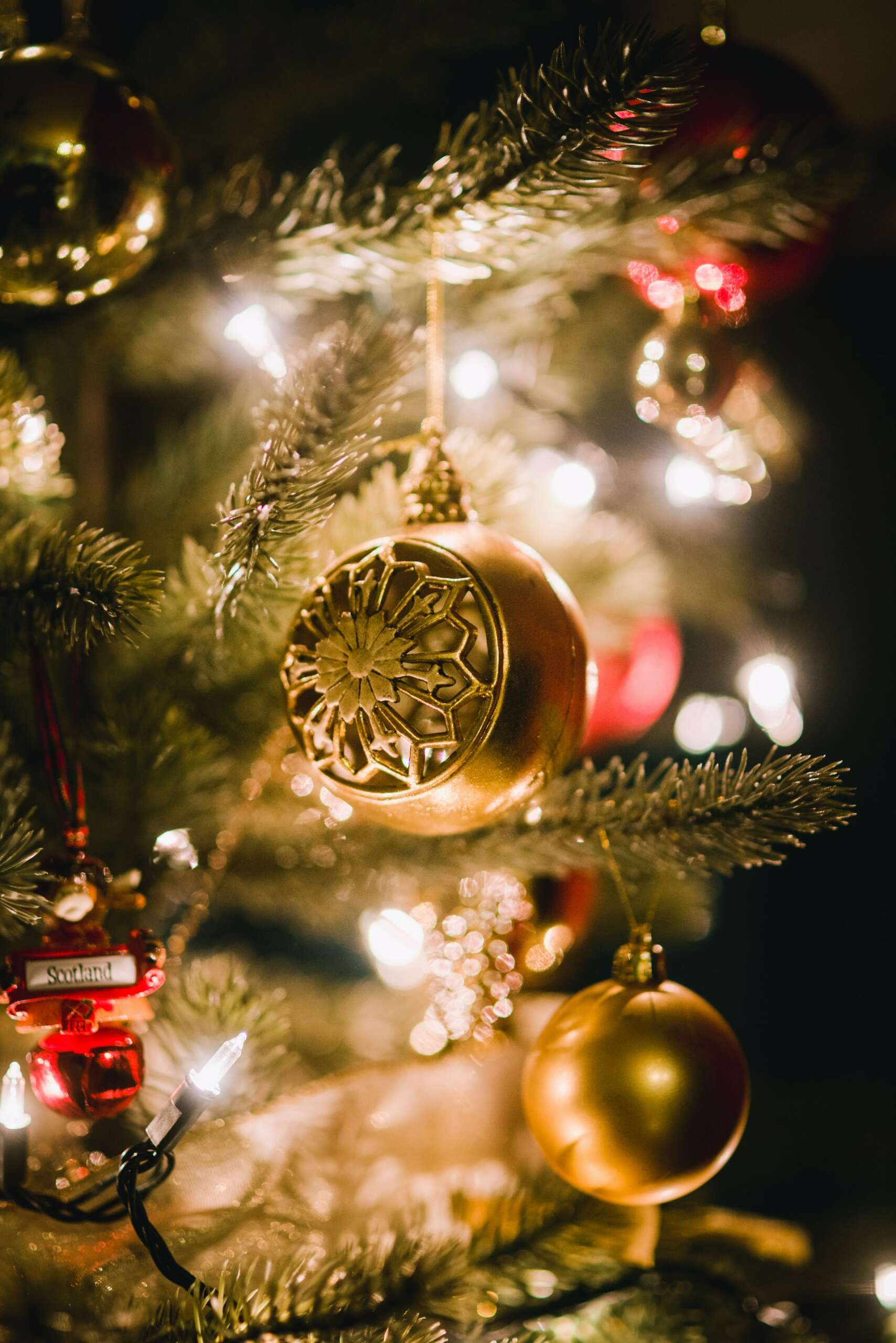The Day of the Dead, or Día de los Muertos, is a vibrant and culturally rich tradition in Mexico. It is often misunderstood as a Mexican version of Halloween, but it is actually a unique celebration that differs greatly in traditions and tone. Rather than focusing on terror and mischief, Day of the Dead is a colorful and joyous occasion that takes place over the first two days of November. It is a time for people to demonstrate their love and respect for deceased family members by participating in parades, parties, and making offerings to honor their ancestors.
Key Takeaways:
- Day of the Dead is a vibrant and culturally rich tradition in Mexico.
- It is a unique celebration that differs greatly from Halloween.
- Day of the Dead takes place over the first two days of November.
- It is a time for people to demonstrate their love and respect for deceased family members.
- Participating in parades, parties, and making offerings are common traditions during Day of the Dead.
The Origins of Day of the Dead
The Day of the Dead originated several thousand years ago with the Aztec, Toltec, and other Nahua people in Mexico. These pre-Hispanic cultures believed that death was a natural part of life and that the deceased were still members of the community. During Día de los Muertos, the spirits of the dead temporarily returned to Earth. Over time, the celebration merged with Christian feasts and now takes place on November 1 and 2, coinciding with All Saints’ Day and All Souls’ Day on the Catholic calendar.
These ancient traditions and beliefs continue to influence Day of the Dead celebrations today. The Aztecs, for example, held a month-long celebration honoring their goddess Mictecacihuatl, known as the Lady of the Dead. They honored her with rituals, offerings, and processions. The Toltecs also held similar rituals during their month-long celebration of the goddess Mictecacihuatli.
Altars and Offerings
Central to the Day of the Dead celebration are altars, known as ofrendas, which are built in private homes and cemeteries. These altars are not meant for worship but rather to welcome the spirits of the deceased back to the realm of the living. They are adorned with various offerings, including water, food, family photos, candles, and even small toys for deceased children. Marigolds, considered the main flowers of the occasion, are used to decorate the altars and guide the souls back to their resting place. Copal incense is burned to purify the area and transmit prayers and praises.
The ofrendas are a way for families to remember and honor their ancestors. They are filled with objects and mementos that represent the life and personality of the departed loved ones. It is believed that the spirits of the deceased will be nourished and comforted by the offerings and will continue to watch over their families from the afterlife.
Table 2: Altar Offerings
| Offering | Symbolic Meaning |
|---|---|
| Water | To quench the thirst of the spirits after their journey |
| Food | To nourish the spirits during their temporary return |
| Family Photos | To remember and honor the deceased loved ones |
| Candles | To guide the spirits back home |
| Marigolds | To attract and guide the spirits with their vibrant colors and scent |
| Copal Incense | To purify the space and transmit prayers and praises |
The ofrendas and their offerings are a central aspect of Day of the Dead, representing the deep connection and ongoing relationship that Mexican families have with their deceased loved ones.
UNESCO Recognition of Day of the Dead
In 2008, the United Nations Educational, Scientific and Cultural Organization (UNESCO) recognized the importance of Day of the Dead by adding it to its list of Intangible Cultural Heritage of Humanity. This recognition highlights the significance of this tradition, as it represents not only a celebration but also a reaffirmation of Indigenous life in Mexico. Day of the Dead is now celebrated by Mexicans of all religious and ethnic backgrounds, showcasing the cultural diversity and heritage of the country.
The Significance of UNESCO Recognition
The UNESCO recognition of Day of the Dead as an intangible cultural heritage further emphasizes the value of preserving and honoring this unique tradition. It acknowledges the profound connection between the celebration and the Indigenous communities of Mexico, recognizing their contributions to the cultural fabric of the nation. This recognition elevates the status of Day of the Dead, ensuring its continued protection and promotion for future generations.
“The UNESCO recognition of Day of the Dead is a testament to the deep-rooted cultural heritage and resilience of the Mexican people. It is a celebration that not only honors the memories of the departed but also serves as a powerful symbol of unity and identity.” – Cultural Heritage Expert
The Celebration of Indigenous Life
Day of the Dead holds immense cultural significance as it embodies the celebration of Indigenous life in Mexico. It provides an opportunity for communities to come together, pay tribute to their ancestors, and maintain a strong connection to their roots. The festivities serve as a reminder of the rich Indigenous heritage that has shaped Mexican culture and continue to influence its traditions today.
| Key Points | Details |
|---|---|
| Year of Recognition | 2008 |
| Organization | UNESCO (United Nations Educational, Scientific and Cultural Organization) |
| Recognition | Added to the list of Intangible Cultural Heritage of Humanity |
| Importance | Reaffirms Indigenous life in Mexico and showcases cultural diversity and heritage |
“The UNESCO recognition of Day of the Dead serves as a symbol of the profound connection between cultural traditions and the preservation of indigenous identity. It is a celebration that celebrates life, honors ancestors, and fosters a sense of unity among the Mexican people.” – Cultural Anthropologist
Altars and Offerings
Central to the Day of the Dead celebration are altars, known as ofrendas, which are built in private homes and cemeteries. These altars are not meant for worship but rather to welcome the spirits of the deceased back to the realm of the living. They are adorned with various offerings, each with a symbolic meaning, creating a sacred space for remembrance and connection.
The main flowers used to decorate the altars are marigolds, which are believed to guide the souls of the departed back to their resting place. The vibrant orange and yellow colors of the marigolds symbolize the sun and its life-giving energy. Copal incense, another essential element of the altars, is burned to purify the area and transmit prayers and praises to the spirits.
“The altars and offerings play a crucial role in the Day of the Dead celebration, serving as a way to honor and remember our loved ones who have passed away,” says Maria Rodriguez, a Mexican cultural expert. “They provide a space for us to connect with our ancestors and show our love and respect.”
The offerings placed on the altars vary depending on personal preferences and traditions, but common items include water, food, family photos, candles, and even small toys for deceased children. These offerings are meant to provide nourishment and comfort to the spirits during their temporary visit to the realm of the living.
| Symbolic Meaning | Items |
|---|---|
| Honoring the deceased | Family photos, personal belongings |
| Providing nourishment | Food and drinks loved by the deceased |
| Guiding the spirits | Marigolds, candles |
| Purifying the space | Copal incense |
Literary Calaveras and the Calavera Catrina
Literary calaveras, a form of satirical poetry or epitaphs about the living, are an integral part of the Day of the Dead celebrations in Mexico. These humorous and witty compositions have been a tradition since the 18th and 19th centuries and continue to be popular today. Literary calaveras playfully poke fun at the living, using death as a metaphorical tool to satirize societal norms, politicians, and even individuals. These poetic expressions of humor serve as a reminder of the transient nature of life and the importance of laughter in the face of death.
One of the most iconic symbols associated with Day of the Dead is the calavera Catrina. This elegantly dressed skeleton figure originated from the work of Mexican illustrator José Guadalupe Posada in the early 20th century. Posada created drawings depicting death as a stylish lady wearing European attire, symbolizing the Mexican society’s fascination with European fashion and its attempt to imitate sophistication. The calavera Catrina has since become synonymous with Day of the Dead and is often seen in artwork, costumes, and decorations during the festivities.
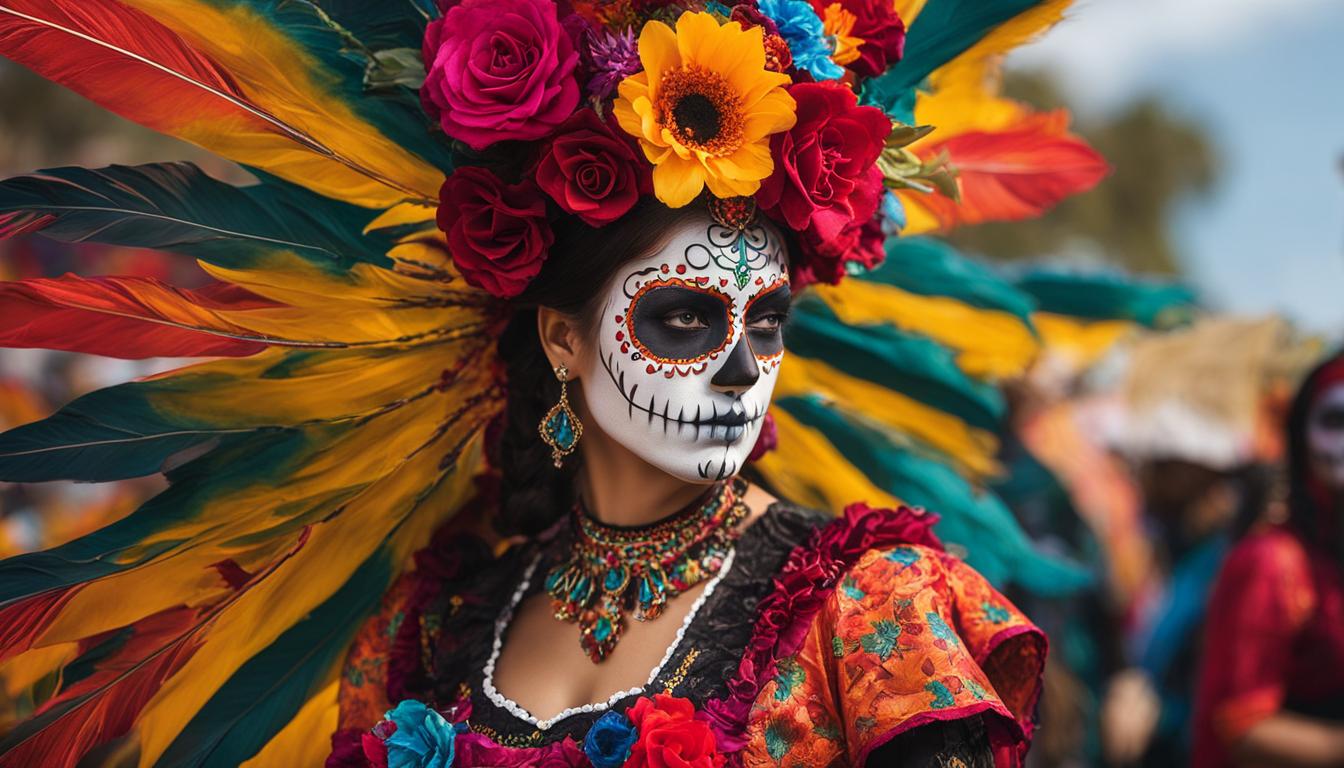
Dressing Up as the Calavera Catrina
“Dressing up as the calavera Catrina is a joyous way to celebrate Day of the Dead and pay tribute to the Mexican culture and artistry that it embodies. The elaborate costumes and face paint allow us to connect with the spirits of our ancestors and show our appreciation for their presence in our lives.” – Maria Gonzalez, Day of the Dead enthusiast
The use of costumes and face paint during Day of the Dead is a powerful expression of Mexican creativity and the celebration of life. It brings communities together, evokes a sense of unity, and allows for personal and cultural expression. Whether it’s through intricate face designs or embodying the iconic calavera Catrina, costumes and face paint play an essential role in the vibrant traditions of Day of the Dead in Mexico.
Papel Picado Decorations
One of the most visually stunning aspects of the Day of the Dead celebration in Mexico is the papel picado, a traditional Mexican paper craft that adds a colorful and festive atmosphere to the festivities. Papel picado, which translates to “perforated paper,” involves creating intricate designs on layers of colored tissue paper by cutting out patterns using hammer and chisel points. The delicate and ornate paper banners are then hung around the altars and in the streets, creating a captivating display. This traditional craft represents the fragile beauty of life and adds a vibrant touch to the celebration.
The Symbolic Meaning of Papel Picado
Papel picado holds deep meaning in Mexican culture. The delicate cutouts represent the ephemeral nature of life and the delicate balance between life and death. The intricate patterns and vibrant colors are a tribute to the joy and beauty found in both the physical and spiritual realms. The perforated paper also symbolizes a connection between the living and the spirits of the deceased, allowing the souls to navigate between worlds during the Day of the Dead festivities.
The Significance of Colorful Decorations
The vibrant colors used in papel picado decorations play a significant role in the Day of the Dead celebration. Each color carries its own symbolism and meaning. For example, purple represents grief and mourning, while yellow symbolizes the sun and the journey of the departed souls. Orange represents the marigold flowers, which are believed to guide the spirits back to their loved ones. The use of various colors in papel picado creations creates a visually stunning display that enhances the celebratory and joyful atmosphere of the Day of the Dead.
Mexico City Parade
The Mexico City Parade is one of the most iconic and anticipated events during the Day of the Dead celebrations in Mexico. Organized by the nonprofit cultural organization Mano a Mano: Mexican Culture Without Borders, the parade showcases the vibrant traditions and customs associated with this important holiday. Each year, the parade attracts both locals and tourists who come to witness the colorful floats, entertainers in elaborate costumes, music, and dance that fill the streets of Mexico City. It has become a major tourist attraction, offering visitors a unique opportunity to immerse themselves in the festive atmosphere and experience the rich cultural heritage of Day of the Dead.
The Mexico City Parade is a spectacle of creativity and artistry, with participants adorning themselves in vivid costumes and face paint to depict skeletons and the iconic calavera Catrina. The parade features stunningly designed floats that pay homage to Mexican folklore, history, and traditions. These floats often depict scenes from Mexican mythology, famous Mexican figures, or important cultural symbols. The visuals are accompanied by lively music and dance performances that add to the joyful ambiance of the parade. The Mexico City Parade truly captures the essence of Day of the Dead and highlights the artistic talent and cultural pride of the Mexican people.
“The Mexico City Parade is a vibrant celebration that brings together people from all walks of life to honor and commemorate the spirits of the deceased. It is a testament to the rich cultural heritage of Mexico and the resilience of its people. The colorful floats, elaborate costumes, and joyful atmosphere create a sense of unity and belonging, reminding us of the power of community and the importance of remembering our loved ones.” – Eduardo Herrera, Parade Participant
Table: Highlights of the Mexico City Parade
| Floats | Costumes | Music and Dance |
|---|---|---|
| Awe-inspiring designs representing Mexican folklore and history | Elaborate costumes depicting skeletons and the calavera Catrina | Traditional music and dance performances that showcase Mexican culture |
| Floral arrangements and decorative elements that reflect the spirit of Day of the Dead | Vibrant colors, intricate details, and creative face paint | Folkloric dances and lively rhythms that engage participants and spectators |
| Artistic interpretations of iconic Mexican figures and symbols | Inspired by traditional Mexican attire and accessories | Instruments such as maracas, trumpets, and drums accompany the performances |
The Mexico City Parade is a testament to the enduring significance and popularity of Day of the Dead in Mexico. It not only attracts visitors from around the world but also serves as an important cultural event for the local community. This vibrant celebration showcases the beauty, creativity, and resilience of the Mexican people and allows participants to honor their ancestors and celebrate the cycle of life and death. The Mexico City Parade is a must-see experience for anyone interested in immersing themselves in the rich traditions and festive spirit of Day of the Dead in Mexico.
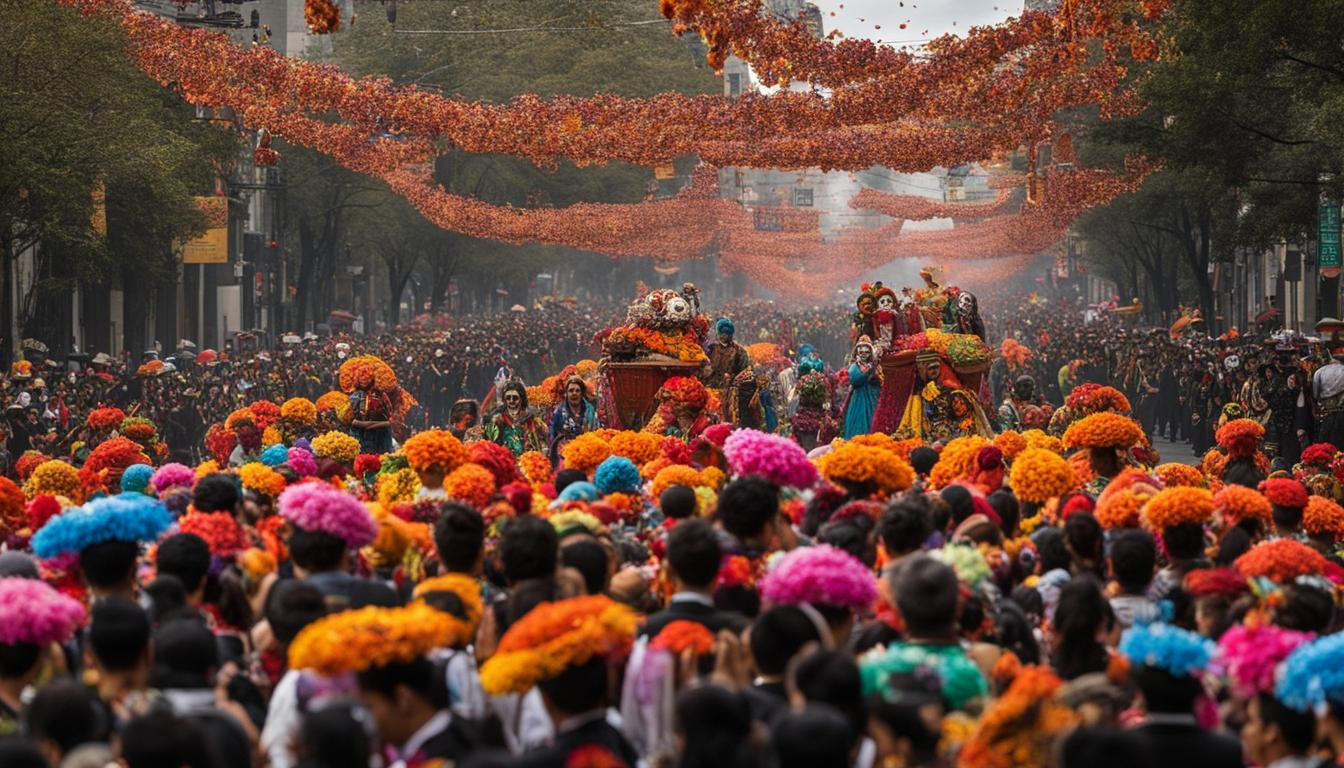
Unique Celebrations in Different Communities
While Day of the Dead is celebrated throughout Mexico, different regions have their own unique ways of honoring the deceased. Each community adds its own flair to the festivities, showcasing the diversity and richness of Mexican culture.
Pátzcuaro
In the town of Pátzcuaro, located in the state of Michoacán, the Day of the Dead celebrations are known for their poignant and moving nature. Here, families gather in cemeteries to decorate the graves of their loved ones with candles, marigolds, and offerings. The atmosphere is peaceful and reflective, as people take the time to remember and honor their ancestors.
Morelos
In the state of Morelos, the Day of the Dead celebrations invite anyone interested to view the altars that families have prepared in their homes. It is a tradition for families to open their doors to visitors, offering food and drinks to honor their loved ones. This gesture of hospitality and inclusivity allows for a sense of community and shared remembrance.
La Huasteca Potosina
In the region of La Huasteca Potosina, the Day of the Dead festivities are known for their day-long parties and lively atmosphere. The celebrations often include music, dancing, and colorful costumes. It is a time for people to come together, celebrate life, and remember those who have passed away.
Aguascalientes
In the city of Aguascalientes, the Day of the Dead is celebrated with week-long festivities, including the famous festival of skulls. The city comes alive with parades, music, dance performances, and art exhibitions. It is a vibrant and energetic celebration that showcases the creativity and enthusiasm of the local community.
In Summary…
Day of the Dead is a truly unique and diverse celebration in Mexico. While it is celebrated nationwide, different communities put their own spin on the festivities, creating a tapestry of cultural traditions and customs. Whether it’s the poignant and reflective atmosphere in Pátzcuaro, the open-door hospitality in Morelos, the day-long parties in La Huasteca Potosina, or the lively week-long celebrations in Aguascalientes, each region adds its own unique flavor to the vibrant tapestry of Day of the Dead in Mexico.
Day of the Dead as an Intimate Family Tradition
Day of the Dead is not just a widely celebrated tradition in Mexico; it is also an intimate family affair. Mexicans view this occasion as a moment to come together and remember their loved ones who have passed away. It is a time to honor and pay tribute to their ancestors, creating a strong connection between the living and the dead.
This family tradition holds deep significance, rooted in Mexican mysticism and spirituality. Mexicans believe that during Day of the Dead, the spirits of their deceased loved ones return to their homes to be with their families. It is a time when the barriers between the realms of the living and the dead are believed to be temporarily lifted.
To honor their loved ones, families prepare altars, or ofrendas, adorned with photographs, favorite foods, drinks, and personal belongings of the departed. These offerings are meant to welcome the spirits and provide them with a comforting and familiar environment. Families gather around the altars, sharing stories, laughter, and memories of their loved ones, ensuring their memory lives on.
Family Traditions Passed Down Through Generations
Day of the Dead is a time-honored tradition that is passed down through generations, fostering a sense of continuity and connection within families. Children learn from their parents and grandparents about the significance of the holiday and the importance of honoring their ancestors. This intergenerational transmission of knowledge and rituals strengthens the family bonds and keeps the tradition alive.
As families gather to celebrate, they create a warm and loving atmosphere, filled with laughter, love, and cherished memories. It is a time to reflect on the cycle of life and death, appreciating the fleeting nature of our existence and the importance of cherishing every moment with our loved ones.
| Family Traditions | Honoring Loved Ones | Mexican Mysticism |
|---|---|---|
| Preparing altars adorned with photos, favorite foods, and personal belongings | Sharing stories, laughter, and memories of departed loved ones | Belief in the temporary return of spirits and the connection between the living and the dead |
| Passing down traditions and rituals through generations | Creating a warm and loving atmosphere for families to come together | Embracing the cycle of life and death |
Day of the Dead allows Mexican families to celebrate their culture, preserve their traditions, and maintain a strong sense of identity. It is a time when the past, present, and future converge, reminding us of the bonds that transcend mortality and the enduring power of love.
Day of the Dead’s Connection to Mexican Resilience
Day of the Dead, or Día de los Muertos, is a celebration that showcases the resilience of the Mexican people. Despite facing numerous challenges throughout history, Mexico has found the strength to embrace life, celebrate their loved ones, and find joy even in the face of death. This vibrant tradition serves as a reminder of the Mexican spirit and their ability to persevere.
During Day of the Dead, Mexicans come together to honor their ancestors and remember those who have passed away. It is a time to reflect on the cycle of life and death and to find solace in the connections that bind families and communities. Despite the sorrow that comes with the loss of loved ones, Day of the Dead is filled with laughter, music, and celebration, demonstrating the Mexican resilience in the face of adversity.
“Day of the Dead represents the resilience and strength of our people. It is a moment when we can laugh and find hope amidst the challenges of life. We celebrate the memories of our ancestors and the legacy they have left behind, creating a sense of unity and renewal,” says María Rodríguez, a Mexican folklore expert.
Throughout the festivities, laughter becomes a powerful symbol of Mexican resilience. It is believed that laughter can ease the journey of the spirits back to the spiritual realm and bring comfort to the living. Day of the Dead is a time when Mexicans embrace joy and happiness, even in the presence of death, and find strength in their ability to celebrate life.
As the vibrant altars, colorful parades, and heartfelt gatherings come to life during Day of the Dead, the Mexican people demonstrate their resilience and the power of their cultural heritage. This celebration serves as a testament to the strength and spirit of Mexico, reminding us all of the importance of finding joy and laughter in the face of challenges.
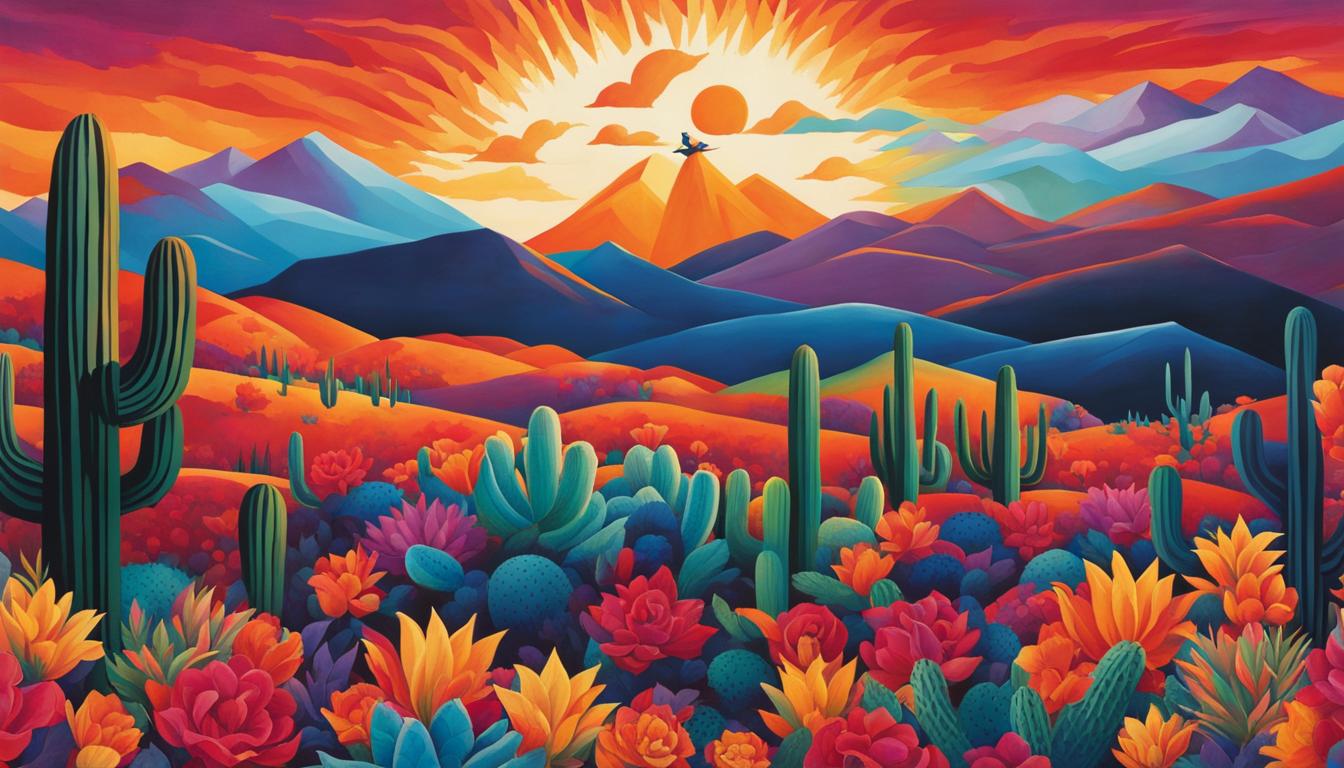
Importance and Significance of Day of the Dead
The Day of the Dead holds immense cultural significance in Mexico. It is a time for remembrance and honoring ancestors, reconnecting with family and community, and celebrating the rich Mexican heritage. This vibrant tradition provides a unique opportunity for people to come together, reflect on the cycle of life and death, and pay tribute to those who have passed away.
Day of the Dead is a deeply rooted tradition that showcases the cultural values and beliefs of the Mexican people. It serves as a way to keep alive the memories and spirits of loved ones, fostering a strong sense of family and community ties. The celebration allows individuals to confront mortality with reverence and gratitude, embracing the idea that death is a natural part of life.
By honoring ancestors through the building of altars, making offerings, and participating in lively parades and festivities, Day of the Dead not only preserves Mexican heritage but also reinforces a sense of identity and belonging. It serves as a reminder of the resilience and perseverance of the Mexican people who find joy even in the face of death and adversity. This celebration is a testament to the rich cultural tapestry of Mexico and the strength of its people’s traditions.
The Day of the Dead celebration is a beautiful and meaningful testament to the vibrant culture and heritage of Mexico, showcasing the country’s unique traditions and collective spirit. It is a time of cultural significance, remembrance, and honoring ancestors, providing a space for individuals to celebrate life, connect with their roots, and find solace in the cycle of life and death. Day of the Dead serves as a powerful reminder of the resilience and joy that can be found in the face of death, and it continues to be a cherished tradition that unites communities and celebrates the beauty of Mexican culture.
Conclusion
Day of the Dead Mexico is a vibrant and meaningful tradition that showcases the rich culture and heritage of Mexico. It is a time for celebration, remembrance, and honoring loved ones who have passed away.
From the elaborate altars and offerings to the lively parades and costumes, Day of the Dead brings communities together and reminds us of the resilience and joy that can be found in the face of death. The tradition is a testament to the Mexican people’s ability to embrace life, find beauty in the cycle of life and death, and persevere in the midst of challenges.
Experience this vibrant tradition and immerse yourself in the cultural celebration of Day of the Dead Mexico. Participate in the parades, witness the stunning altars, taste the traditional foods and drinks, and embrace the rich symbolism and rituals that make this occasion so special. Day of the Dead offers a unique opportunity to connect with Mexican heritage and join in celebrating the lives and memories of those who have come before.
FAQ
What is Day of the Dead?
Day of the Dead, or Día de los Muertos, is a vibrant and culturally rich tradition in Mexico. It is a time for people to demonstrate their love and respect for deceased family members by participating in parades, parties, and making offerings to honor their ancestors.
How did Day of the Dead originate?
Day of the Dead originated several thousand years ago with the Aztec, Toltec, and other Nahua people in Mexico. These pre-Hispanic cultures believed that death was a natural part of life and that the deceased were still members of the community. Over time, the celebration merged with Christian feasts and now takes place on November 1 and 2, coinciding with All Saints’ Day and All Souls’ Day on the Catholic calendar.
Why is Day of the Dead significant?
In 2008, the United Nations Educational, Scientific and Cultural Organization (UNESCO) recognized the importance of Day of the Dead by adding it to its list of Intangible Cultural Heritage of Humanity. This recognition highlights the significance of this tradition, as it represents not only a celebration but also a reaffirmation of Indigenous life in Mexico. Day of the Dead is now celebrated by Mexicans of all religious and ethnic backgrounds, showcasing the cultural diversity and heritage of the country.
What are altars and ofrendas?
Altars, known as ofrendas, are built in private homes and cemeteries during Day of the Dead. These altars are not meant for worship but rather to welcome the spirits of the deceased back to the realm of the living. They are adorned with various offerings, including water, food, family photos, candles, and even small toys for deceased children. Marigolds, considered the main flowers of the occasion, are used to decorate the altars and guide the souls back to their resting place. Copal incense is burned to purify the area and transmit prayers and praises.
What are literary calaveras and the calavera Catrina?
Literary calaveras are humorous poems and epitaphs about the living that have been a tradition since the 18th and 19th centuries. The calavera Catrina, a styled skeleton, originated from the work of Mexican illustrator José Guadalupe Posada. The artist depicted death wearing fancy European clothes, symbolizing Mexican society’s emulation of European sophistication. Diego Rivera later featured the calavera Catrina in his mural, “Dream of a Sunday Afternoon in Alameda Park,” solidifying her as a symbol of the Day of the Dead.
What are traditional foods and drinks for Day of the Dead?
Traditional foods for Day of the Dead include pan de muerto, a sweet bread adorned with bones and skulls, and sugar skulls, which are part of the sugar art tradition. Drinks such as pulque, a fermented beverage made from agave sap, atole, a warm porridge made from corn flour, and hot chocolate are also prepared to celebrate the holiday and provide nourishment for the spirits.
How do people dress up for Day of the Dead?
Day of the Dead is an opportunity for people to dress up and embrace their creativity. Skeleton makeup is a common choice, with people of all ages painting their faces to resemble skulls. Many also choose to dress in suits and fancy dresses, mimicking the iconic calavera Catrina. The use of costumes and face paint adds to the festive atmosphere and allows individuals to immerse themselves in the spirit of the celebration.
What is papel picado?
Papel picado is a Mexican paper craft that is a popular decoration during the Day of the Dead festivities. Artisans create intricate designs by stacking layers of colored tissue paper and cutting out patterns using hammer and chisel points. These delicate paper banners are then hung around the altars and in the streets, representing the fragility of life and adding a vibrant touch to the celebration.
Is there a Day of the Dead parade in Mexico City?
Yes, Mexico City hosts an iconic Day of the Dead parade, organized by the nonprofit cultural organization Mano a Mano: Mexican Culture Without Borders. The parade features colorful floats, entertainers in elaborate costumes, music, and dance. It takes place in late October and offers a unique opportunity for visitors to immerse themselves in the festive atmosphere and experience the vibrant traditions of Day of the Dead.
How do different communities celebrate Day of the Dead?
While Day of the Dead is celebrated throughout Mexico, different regions have their own unique ways of honoring the deceased. For example, Pátzcuaro in Michoacán is known for its poignant and moving celebrations, while La Huasteca Potosina indulges in day-long parties. Each community adds its own flair to the festivities, showcasing the diversity and richness of Mexican culture.
What is the significance of Day of the Dead for families?
Day of the Dead is not just about honoring the deceased but also providing for their journey back to the spiritual realm. Families often place their loved ones’ favorite meals on the altars as offerings. Mexicans view this occasion as a moment to remember and honor their lost loved ones, allowing the spirits of the deceased to return to their homes, even if only for a short period. It is a time to celebrate life and maintain a strong connection with those who have passed away.
How does Day of the Dead represent Mexican resilience?
Day of the Dead serves as a reminder of Mexico’s ability to persevere and find joy even in the face of death and difficult times. The celebration represents resilience and the strength to laugh and find hope amidst adversity. It showcases the resilience of the Mexican people and their ability to embrace life, celebrate their loved ones, and find beauty in the cycle of life and death.
Why is Day of the Dead culturally significant?
Day of the Dead holds immense cultural significance in Mexico. It is a time for remembrance and honoring ancestors, reconnecting with family and community, and celebrating the rich Mexican heritage. The holiday’s recognition by UNESCO as Intangible Cultural Heritage of Humanity further highlights its importance on a global scale. Day of the Dead allows people to maintain a strong connection with their roots, appreciate the diversity of Mexican traditions, and foster a sense of unity and reverence for the cycle of life.


